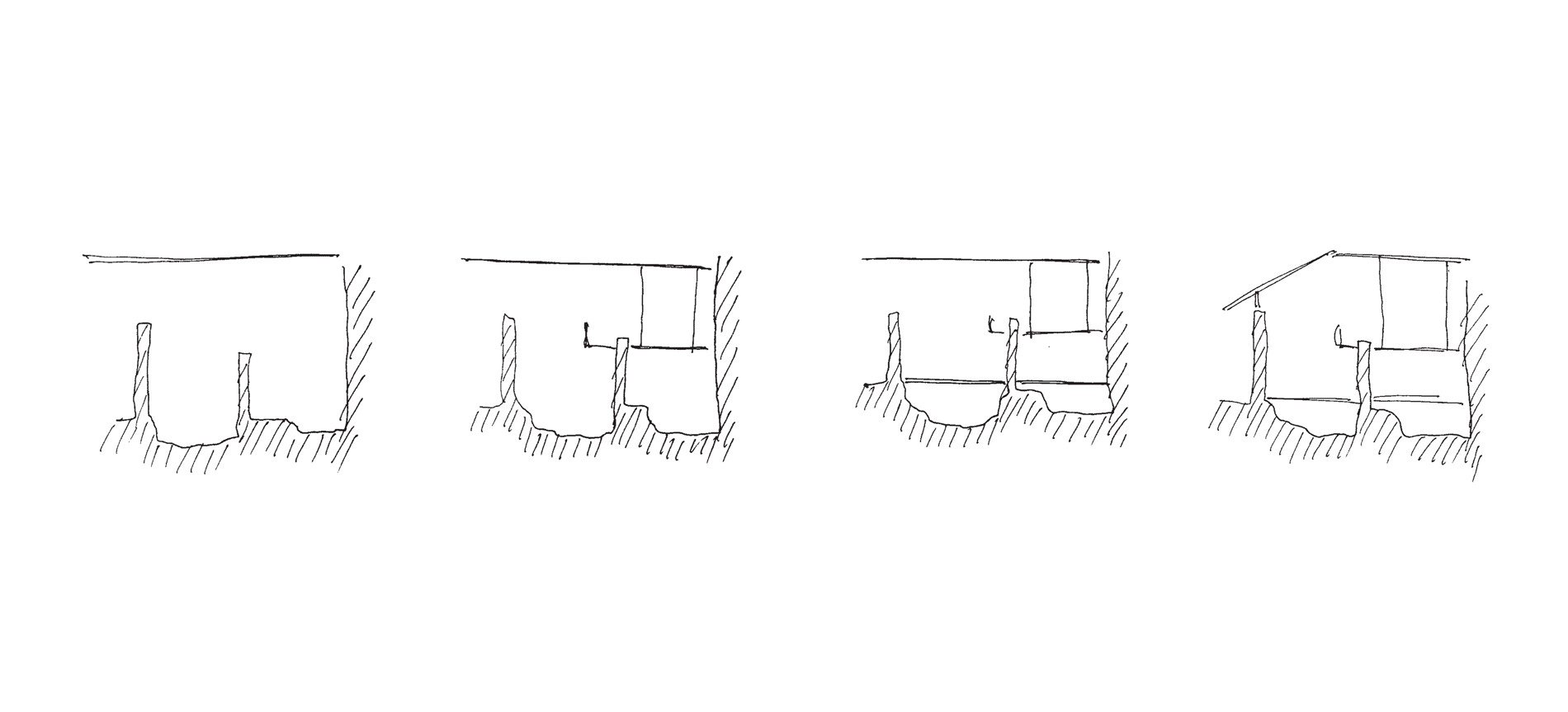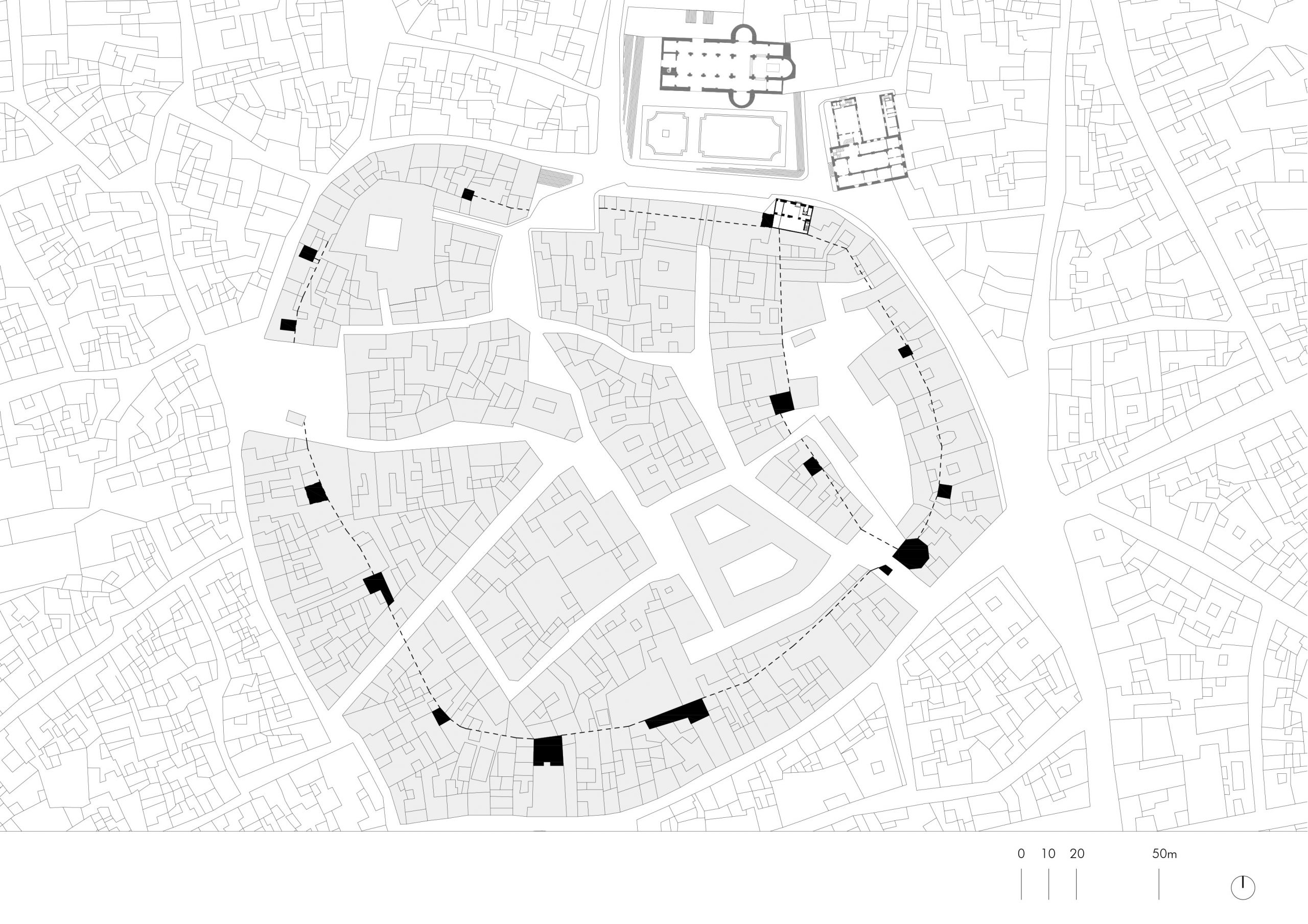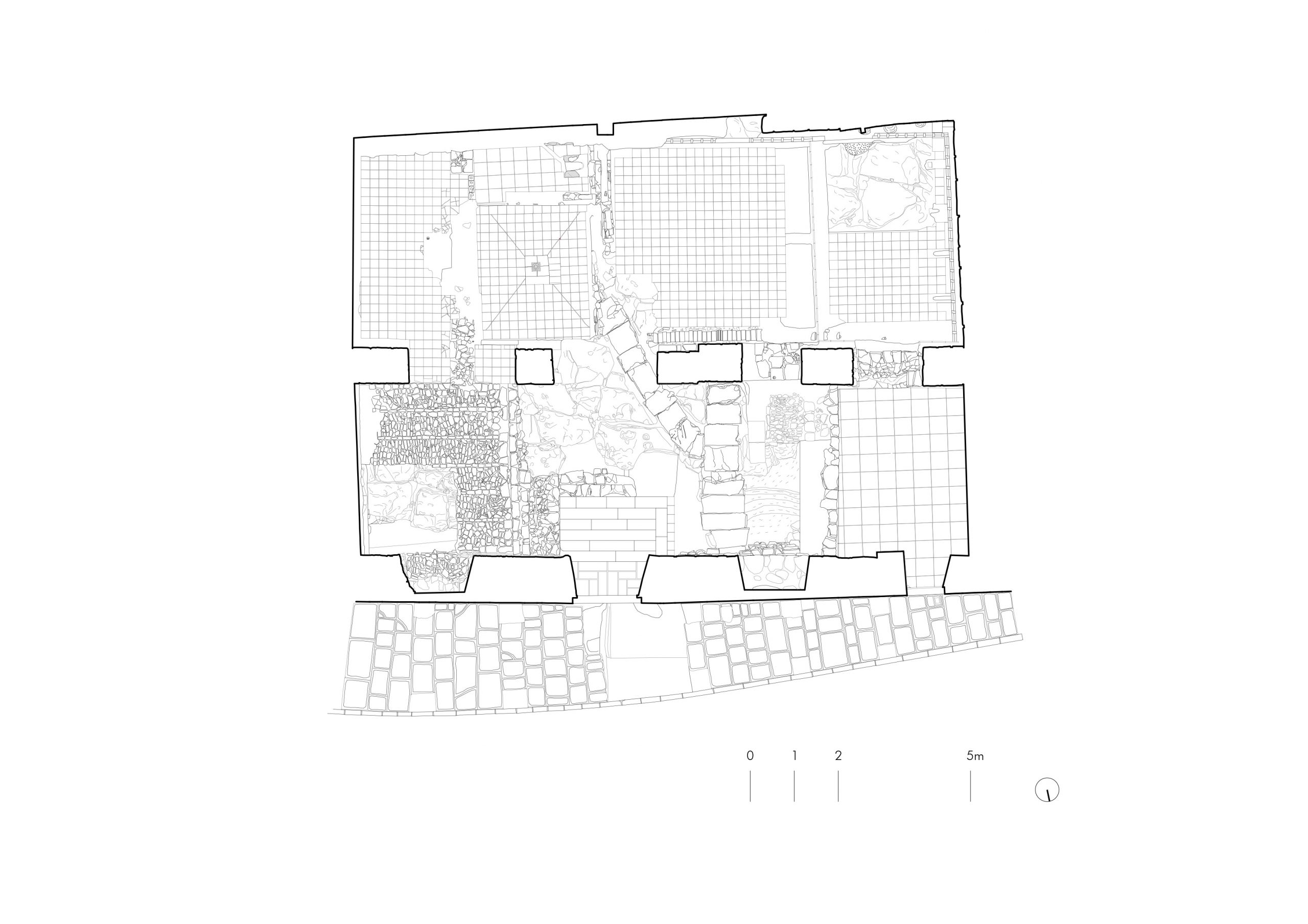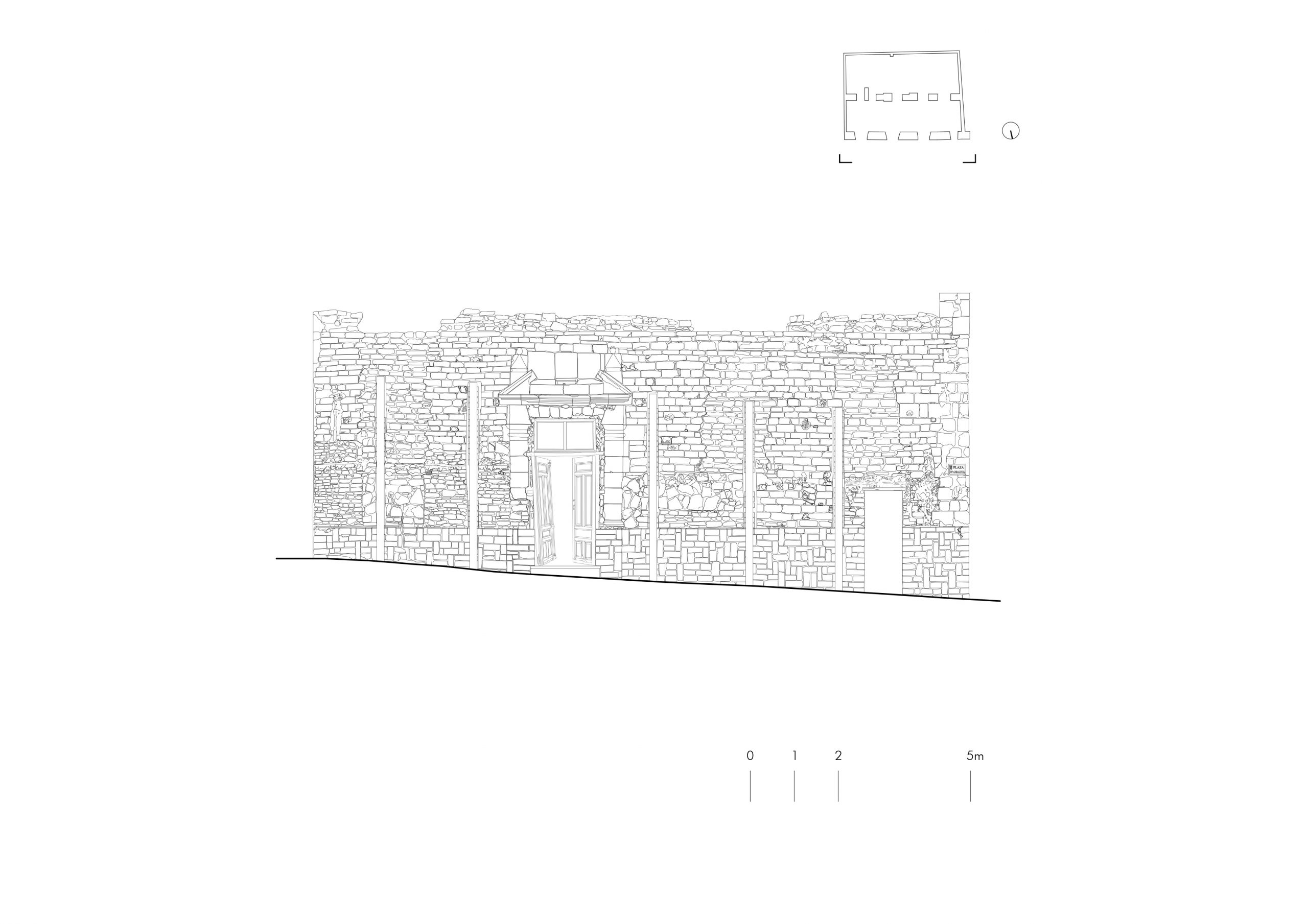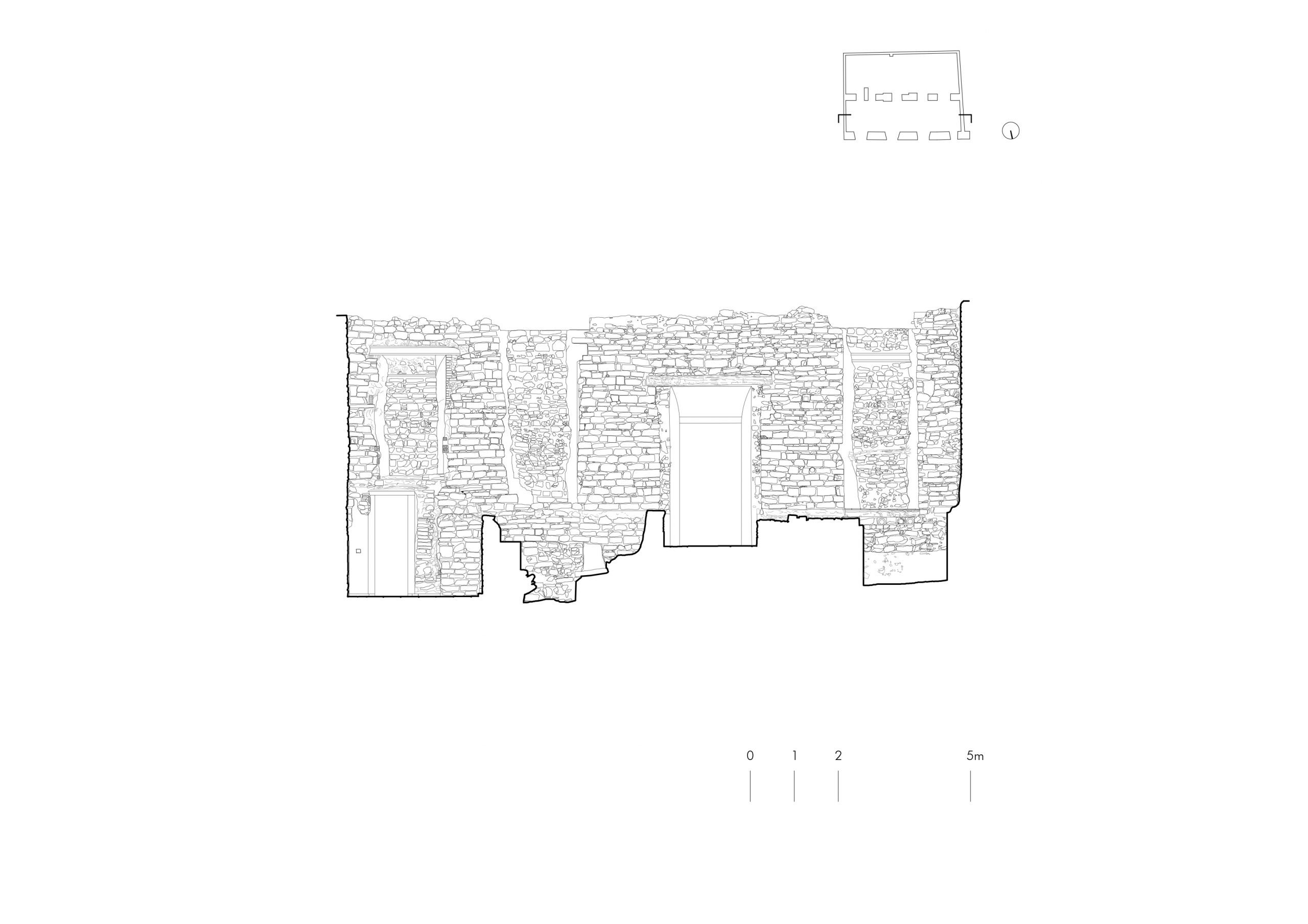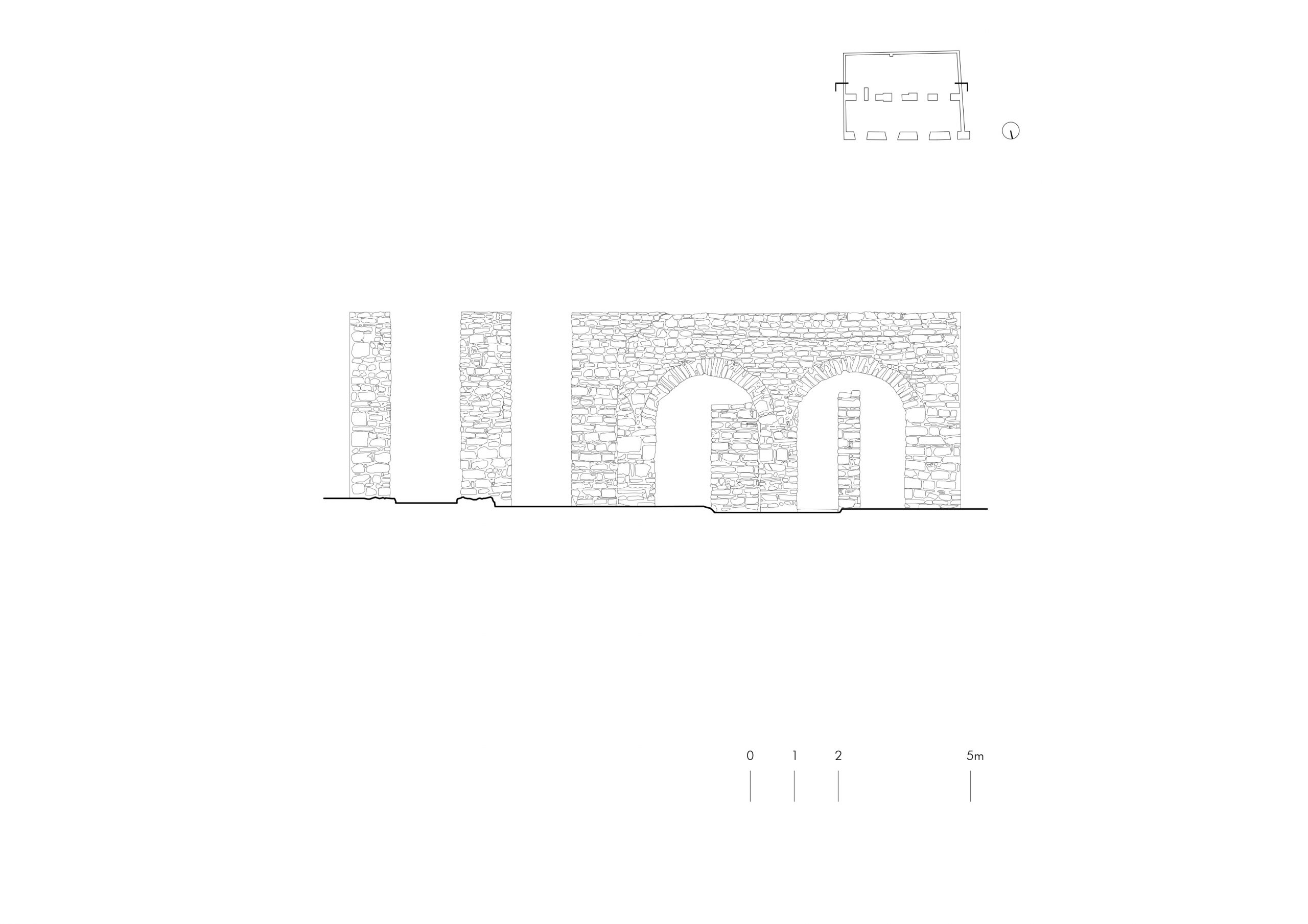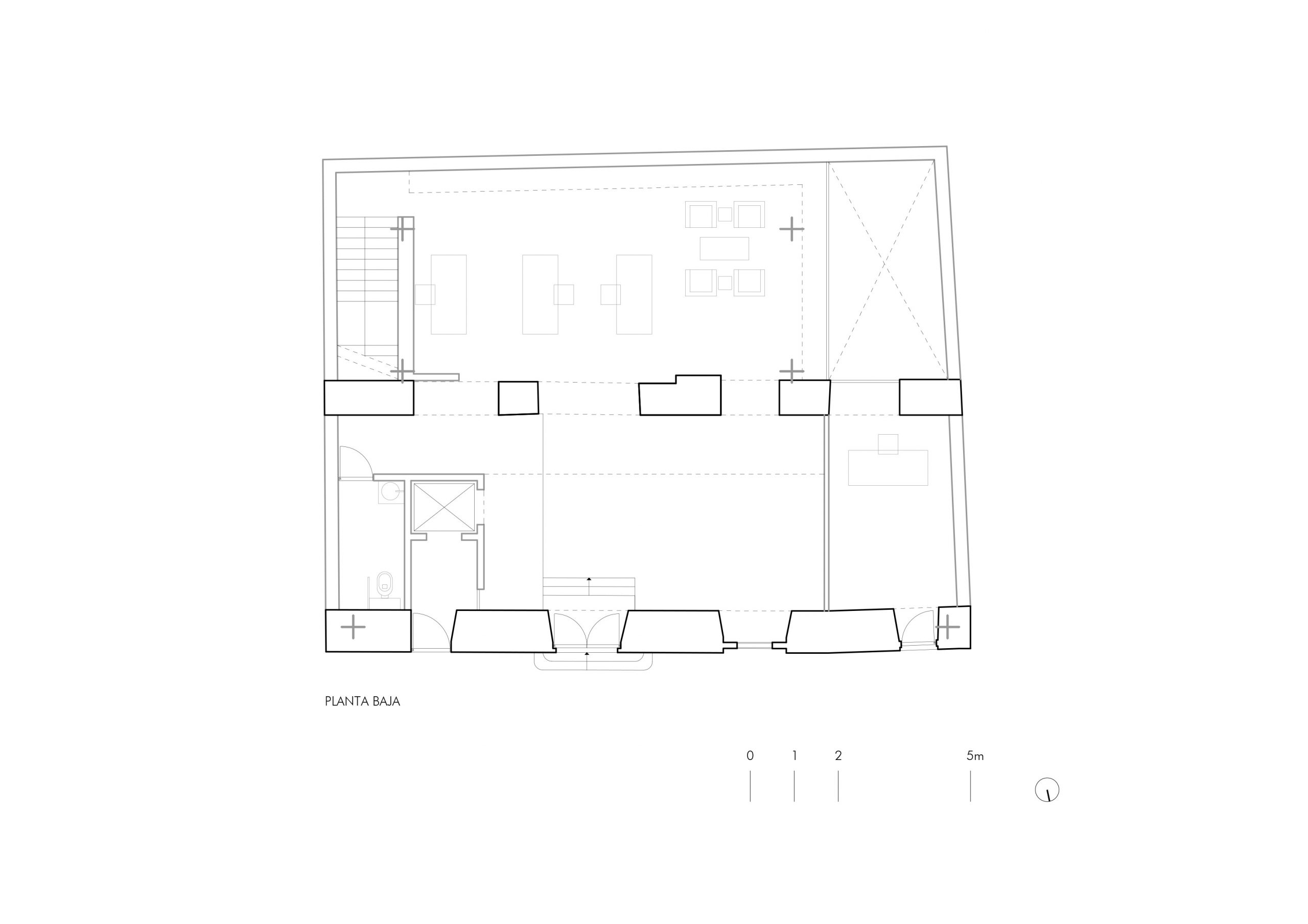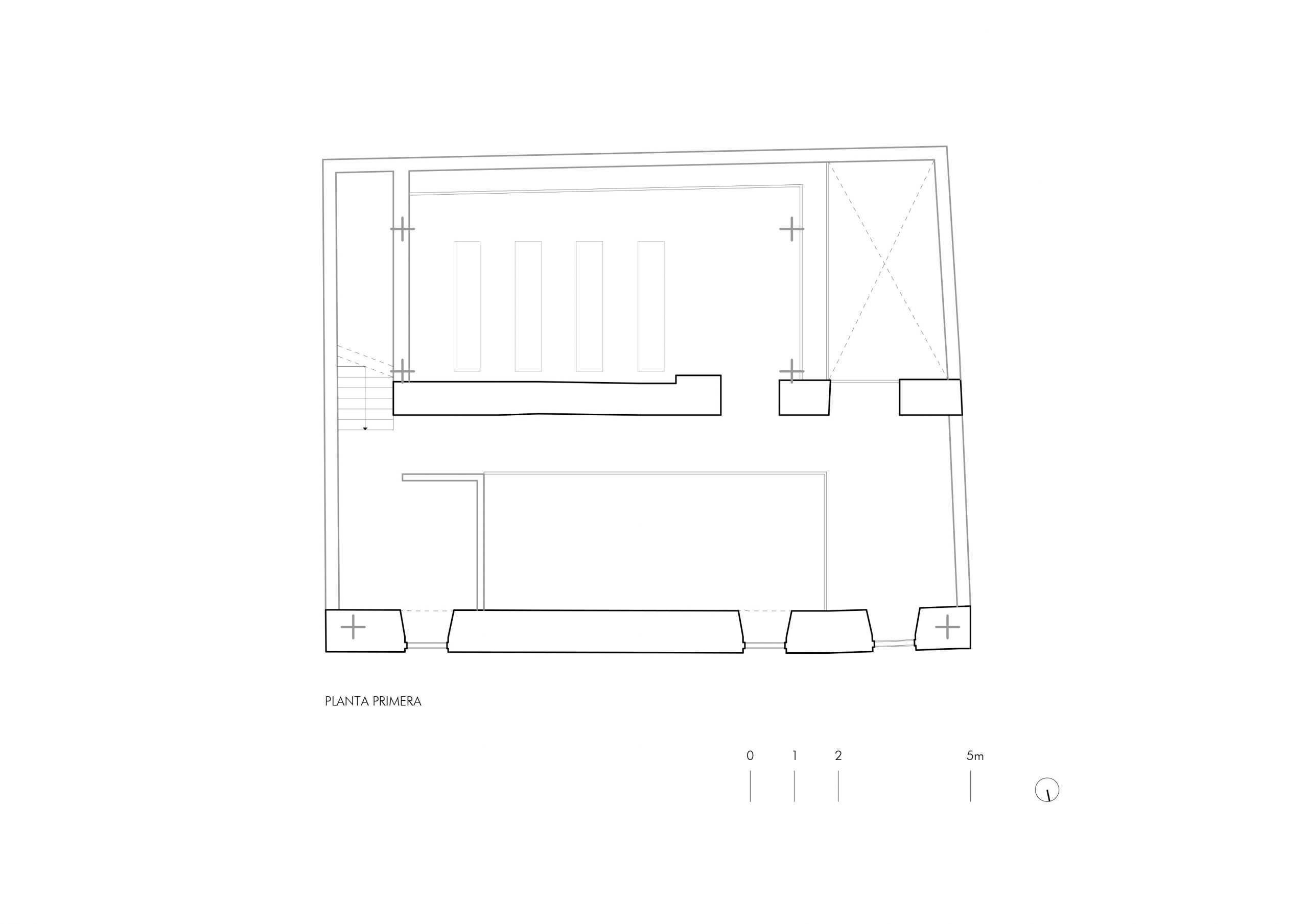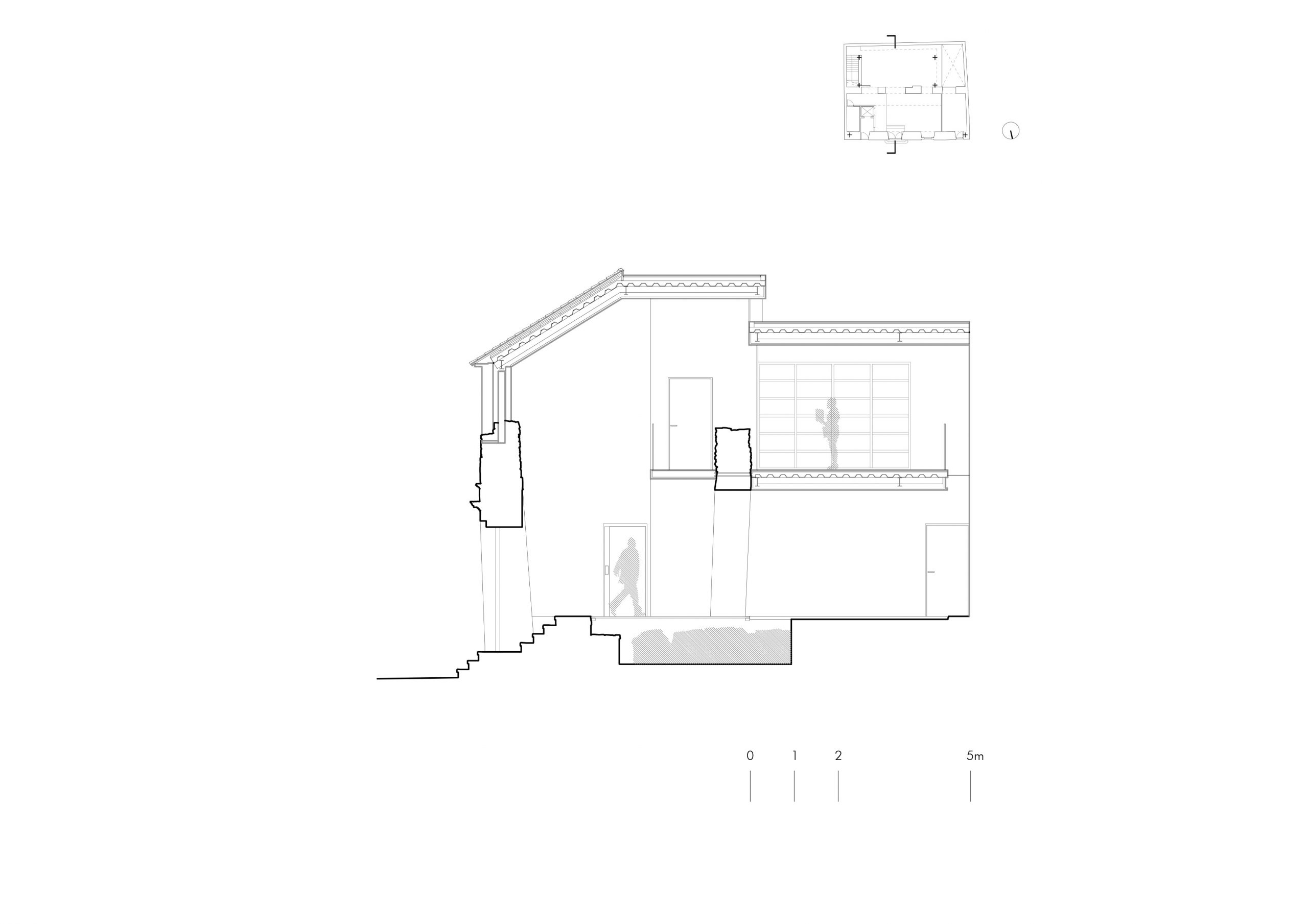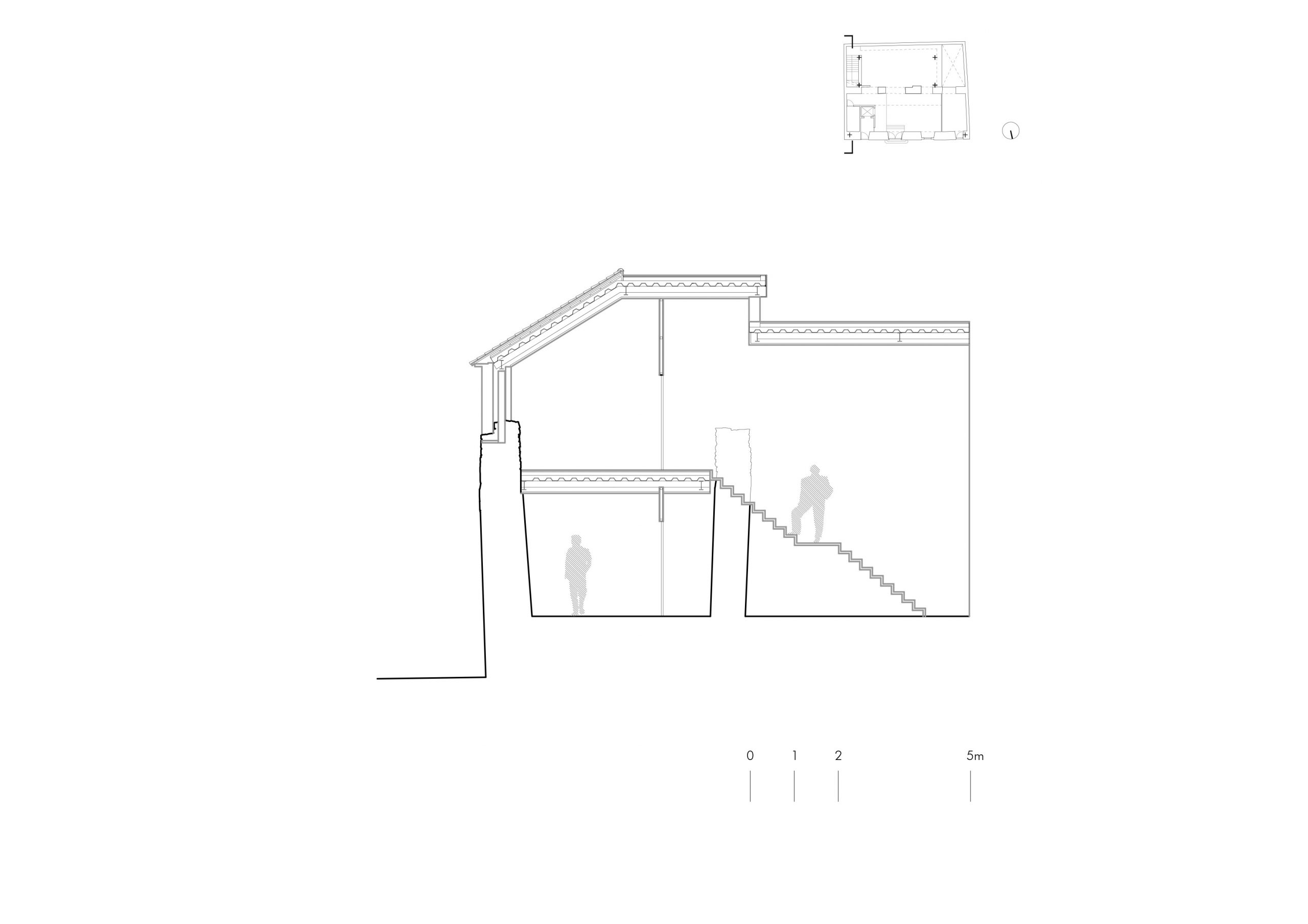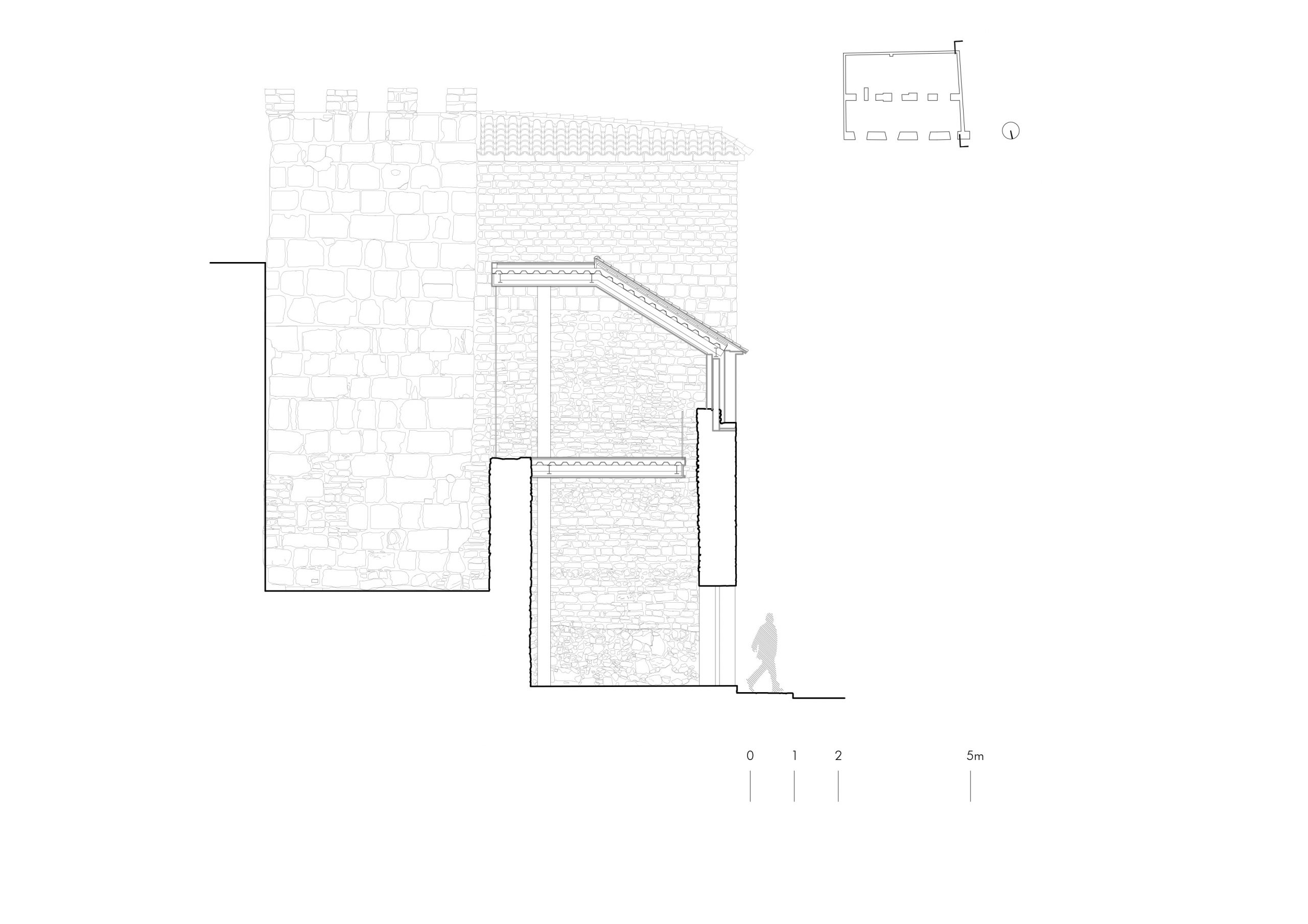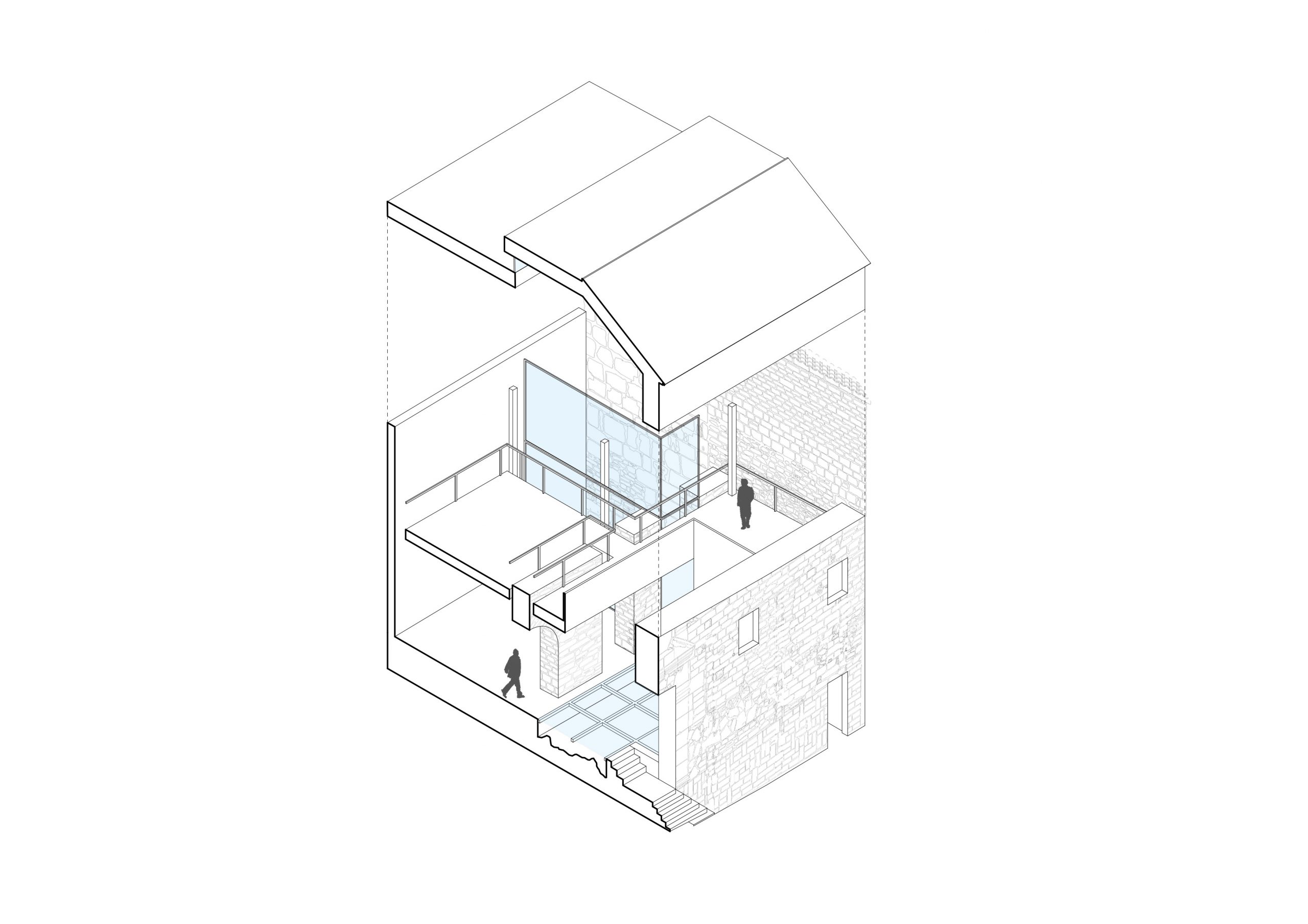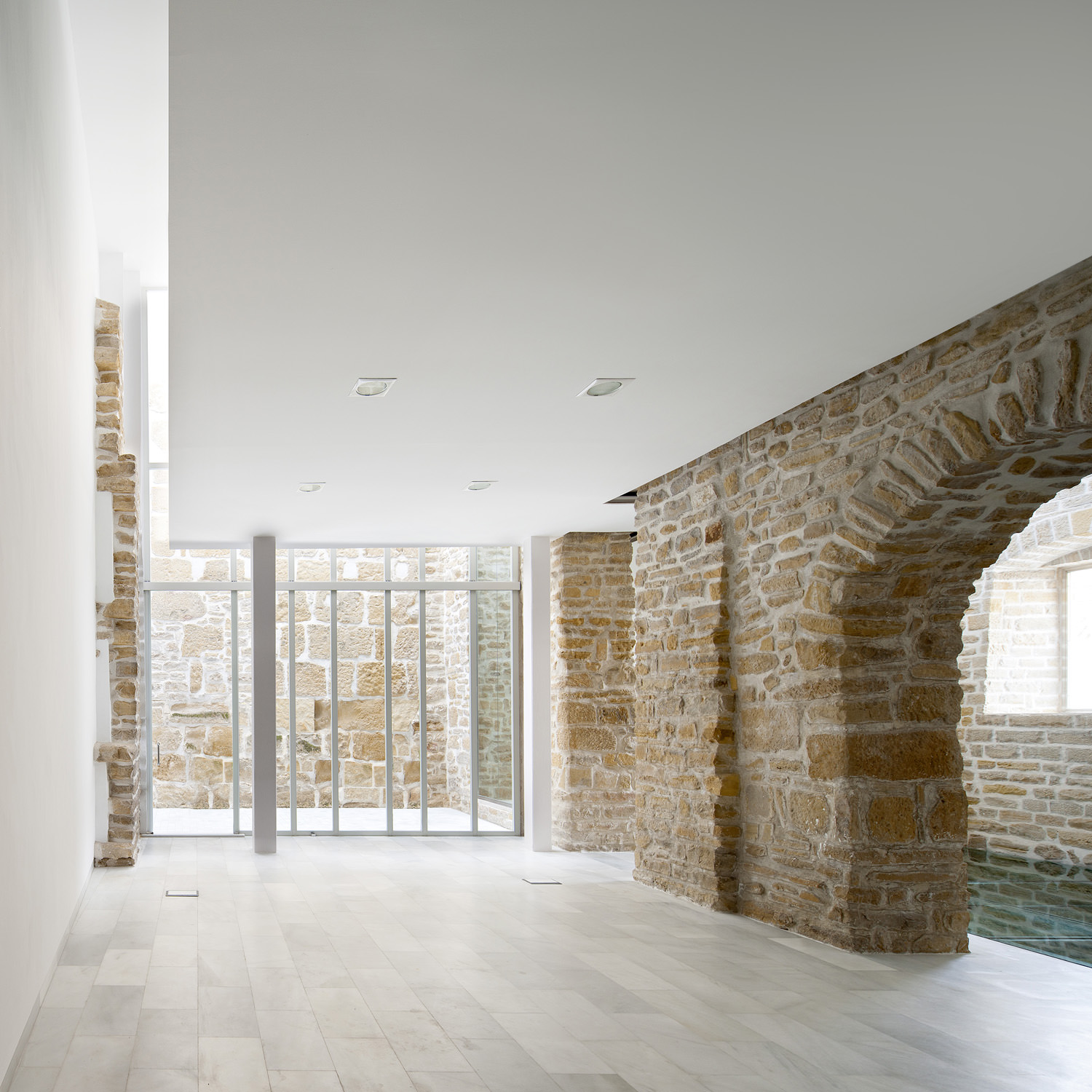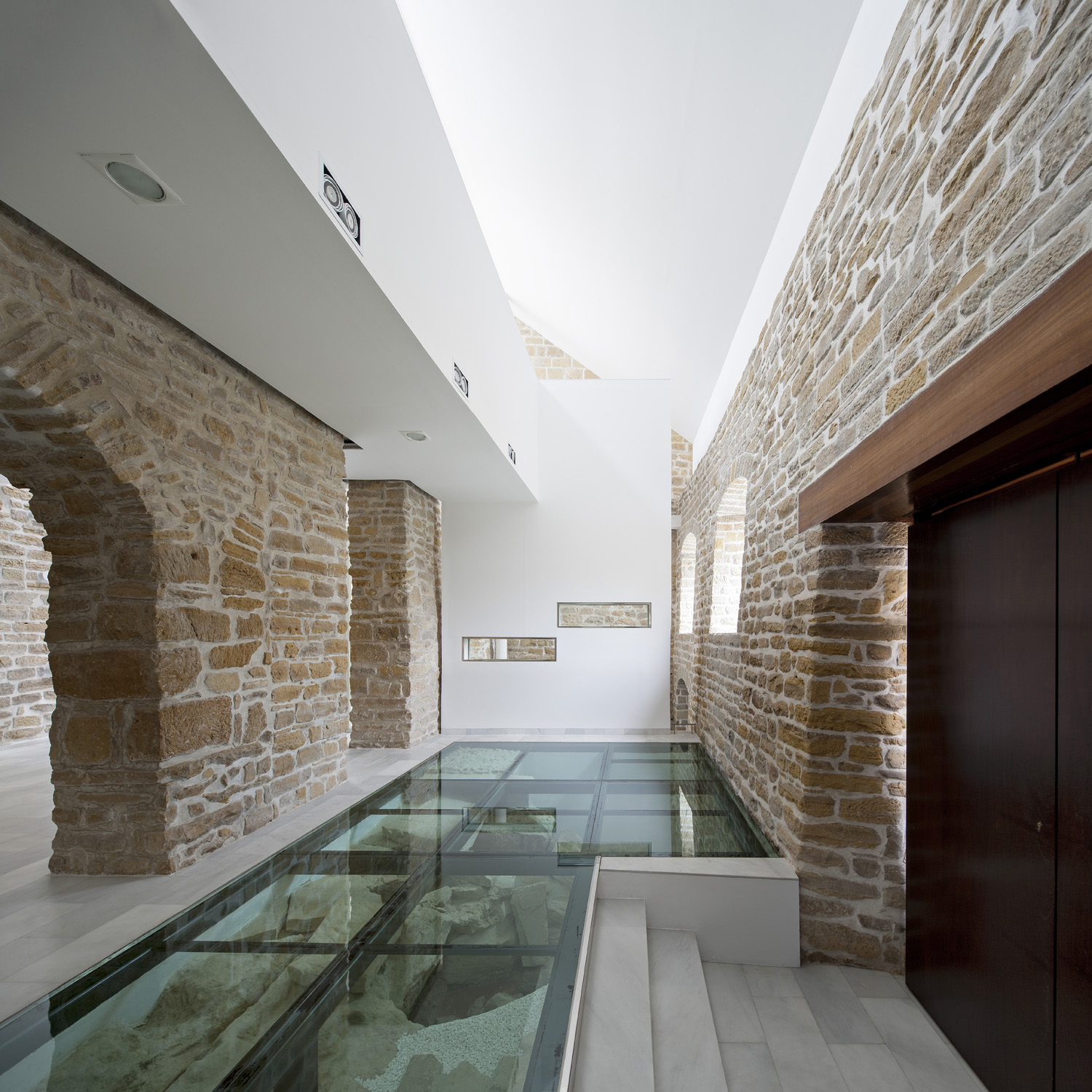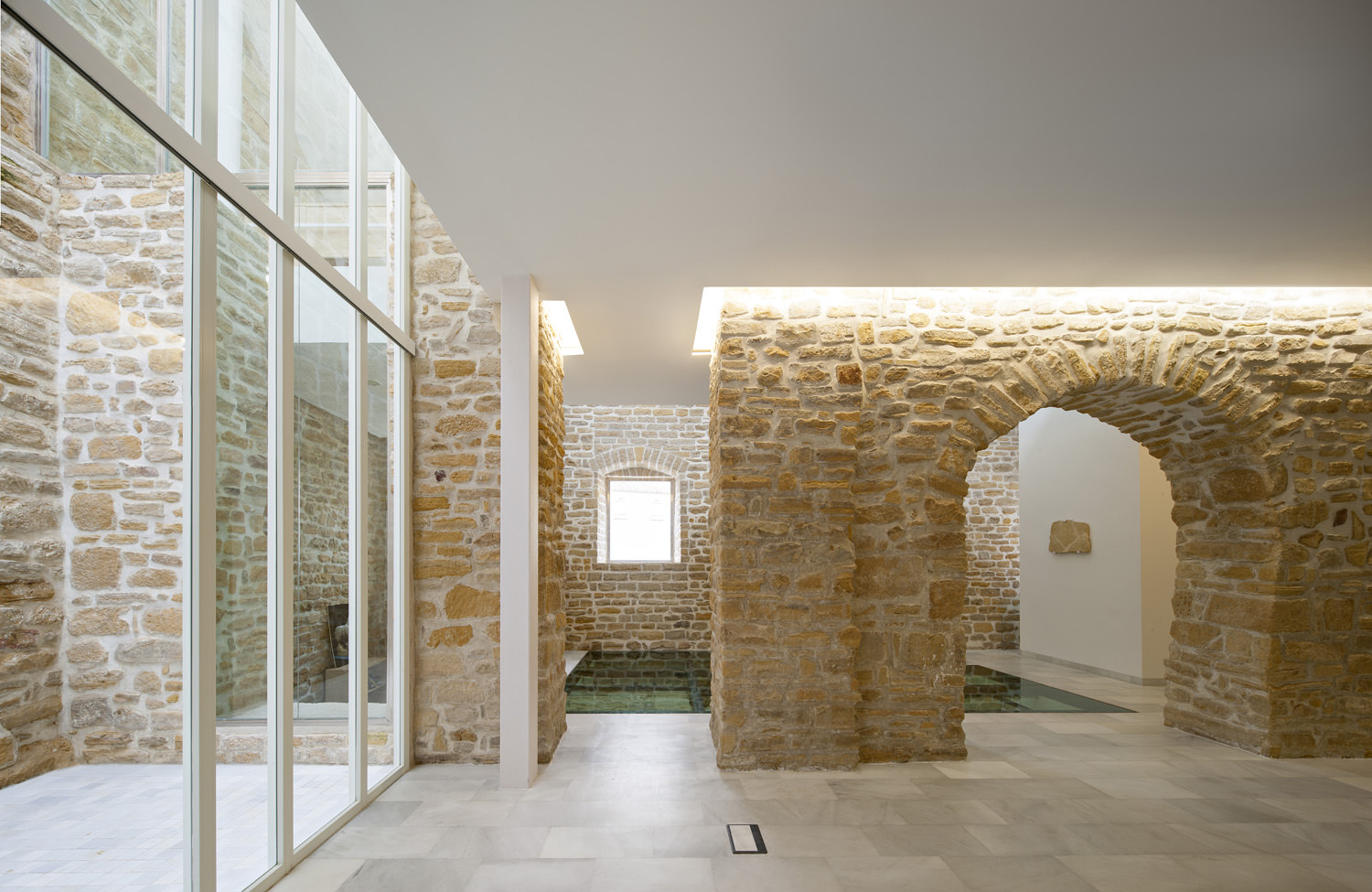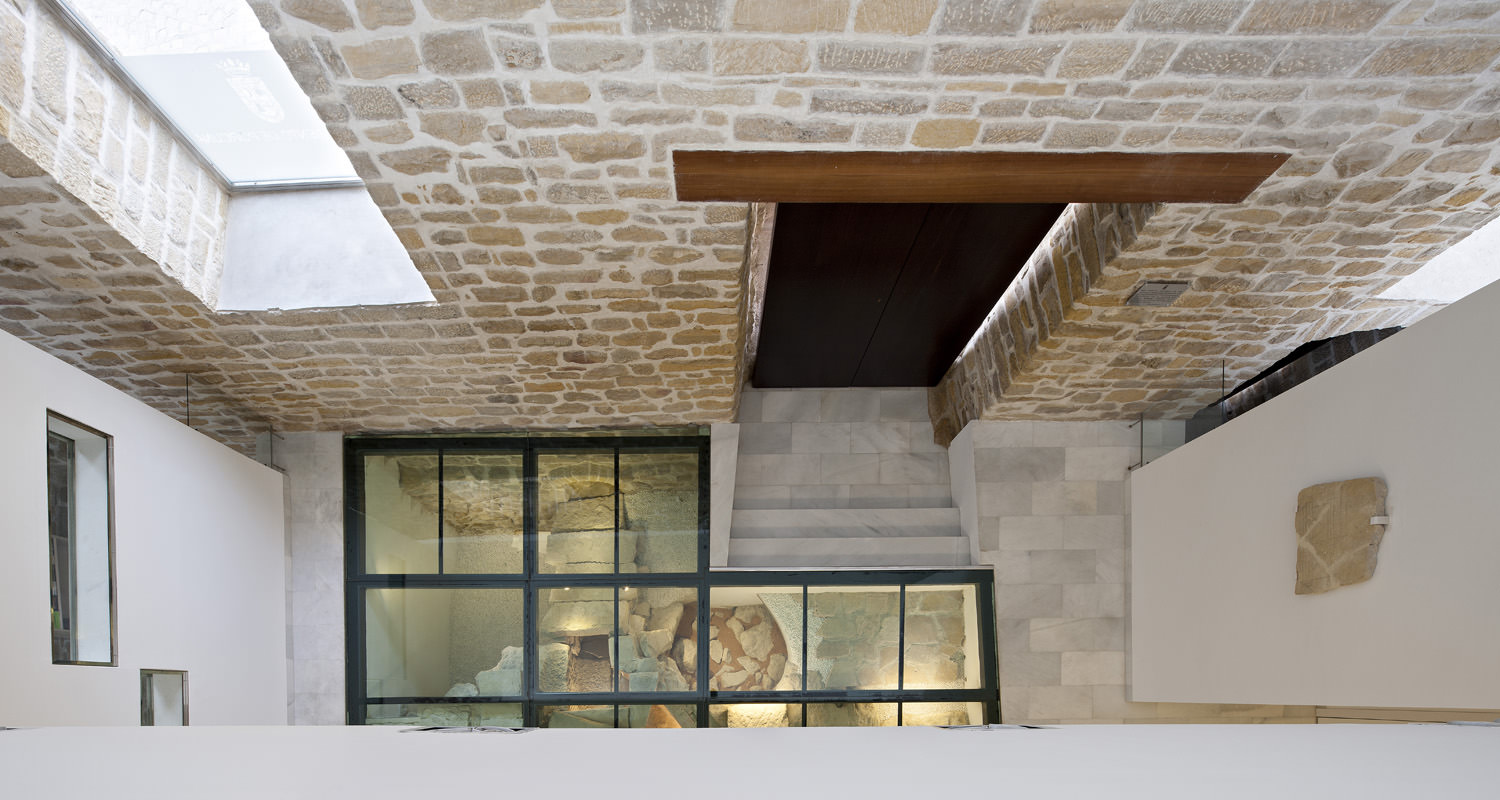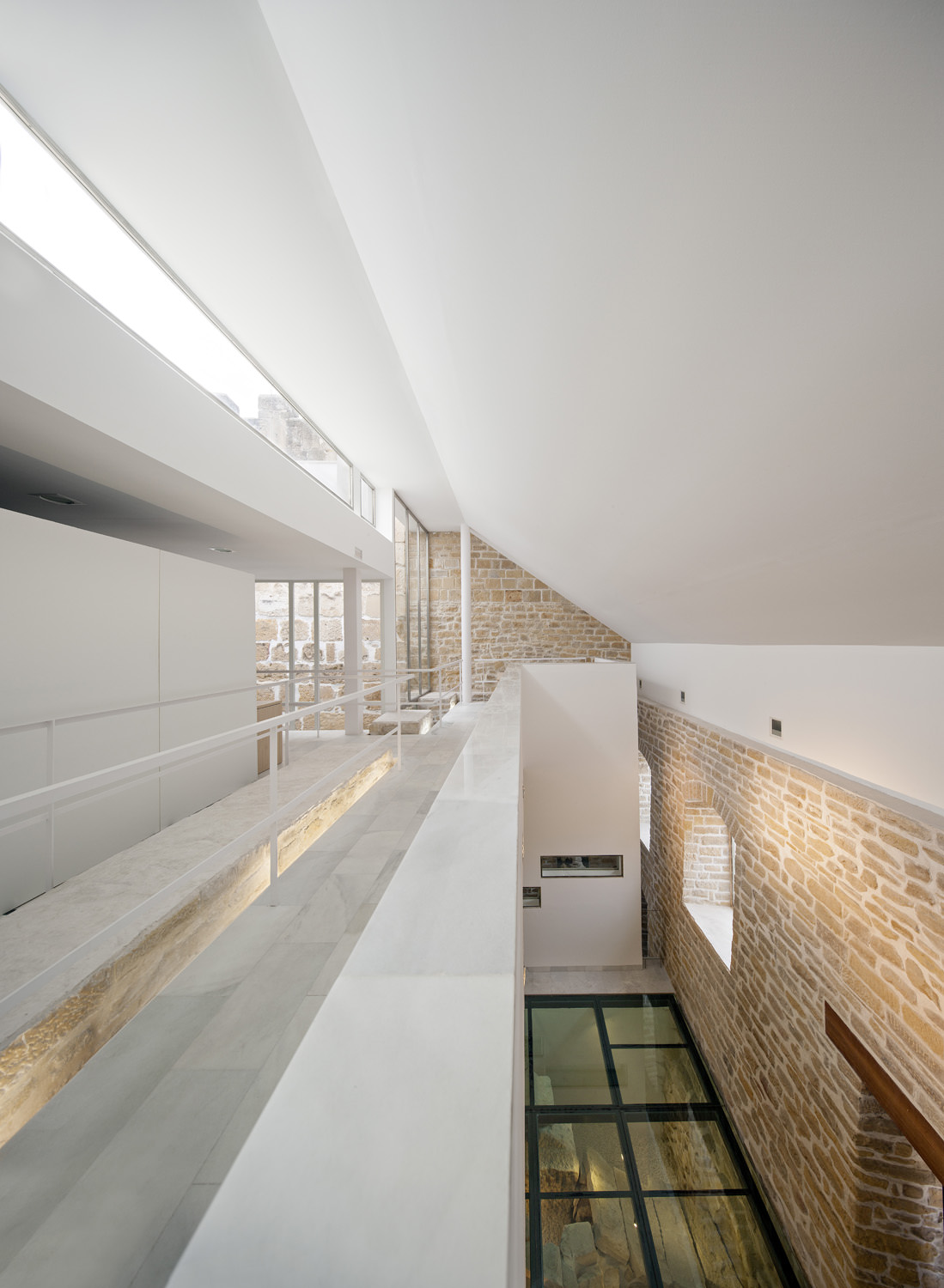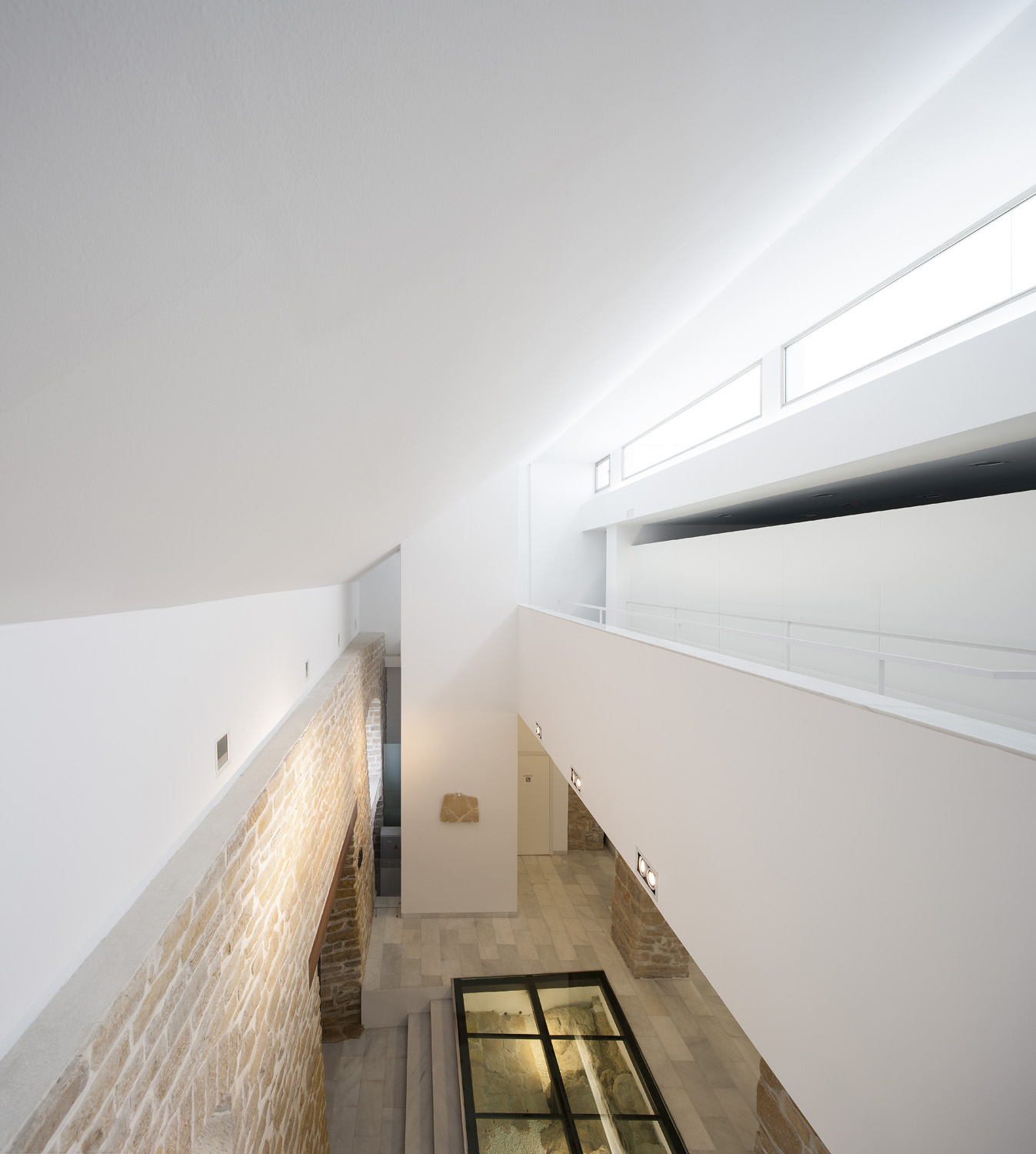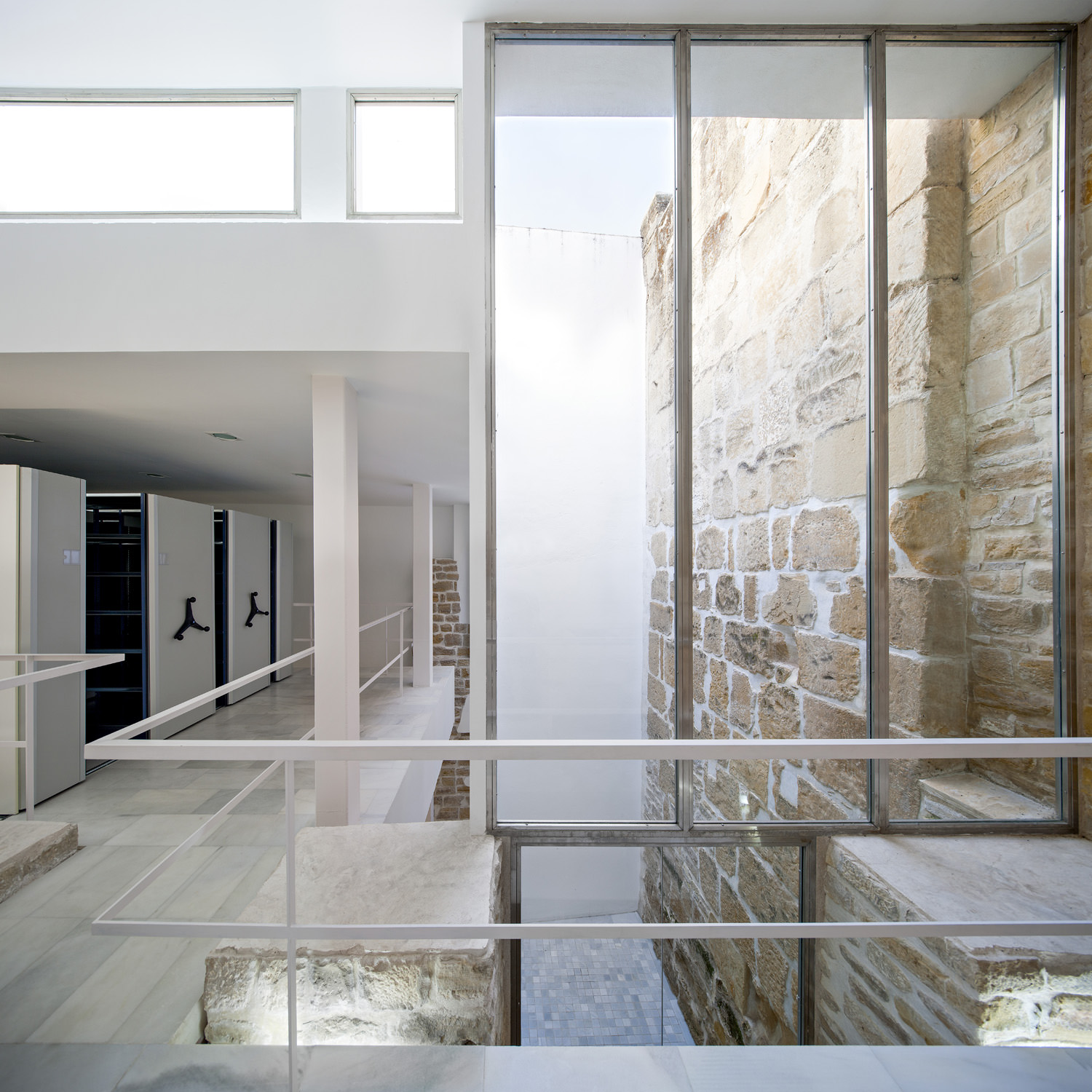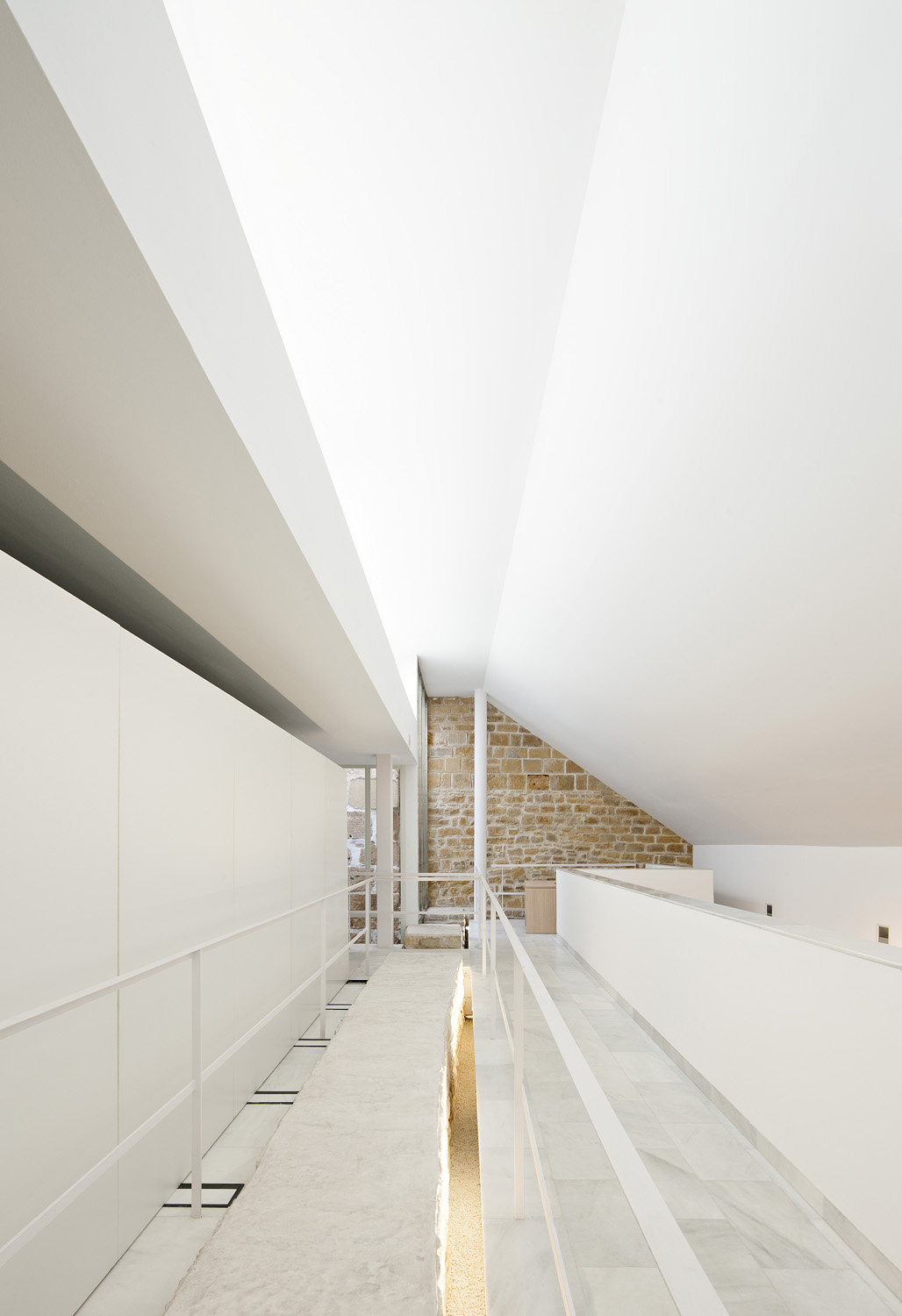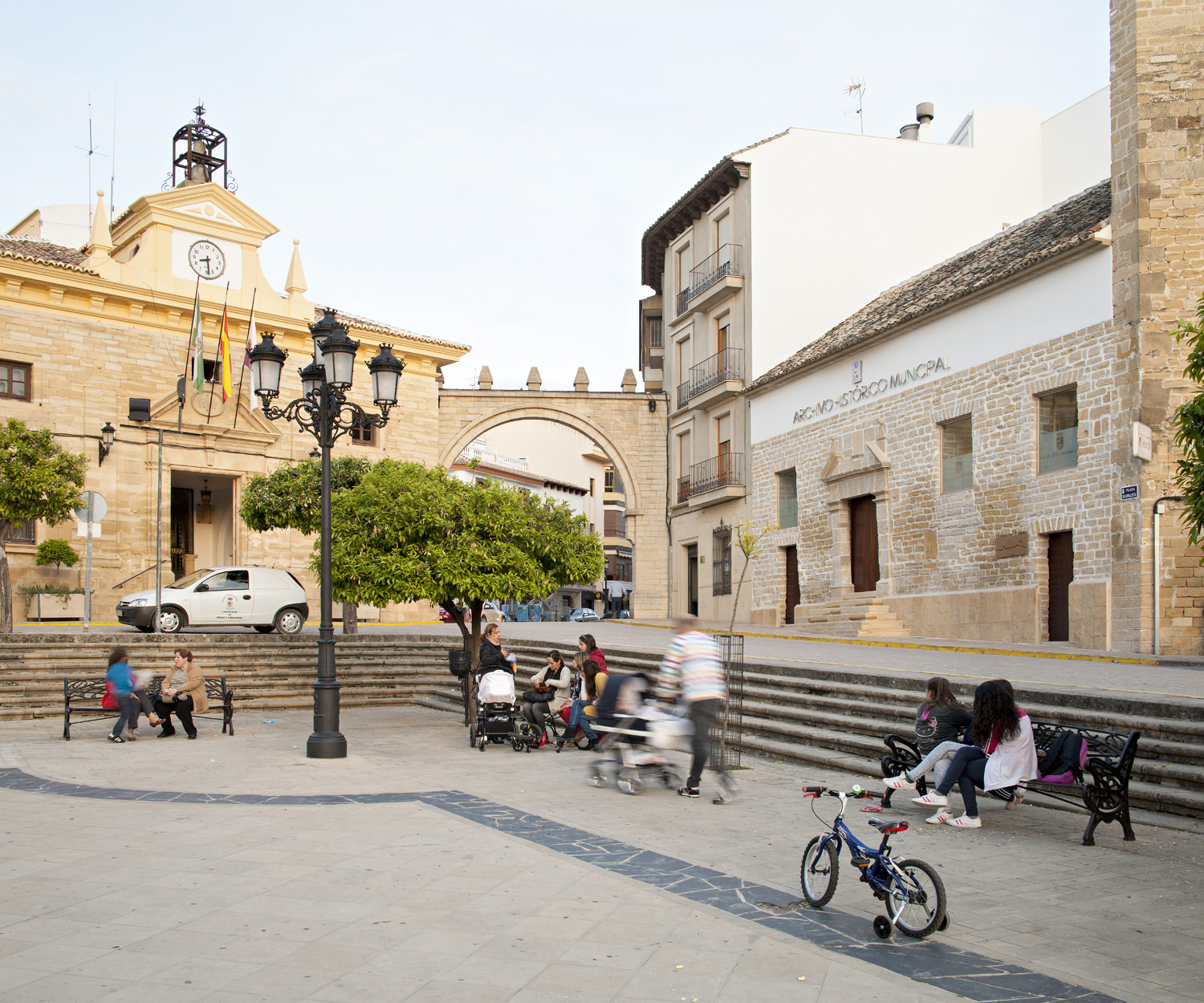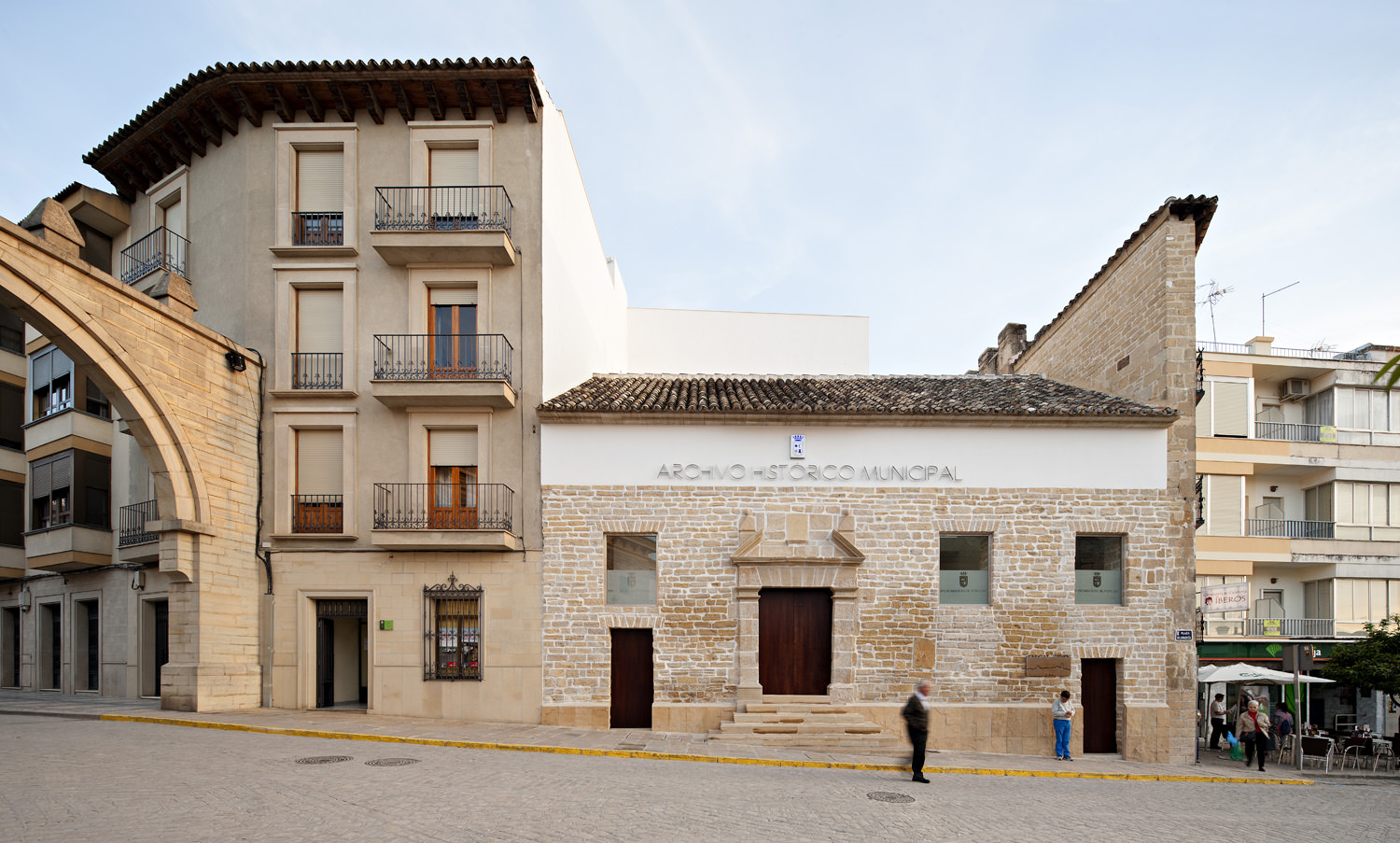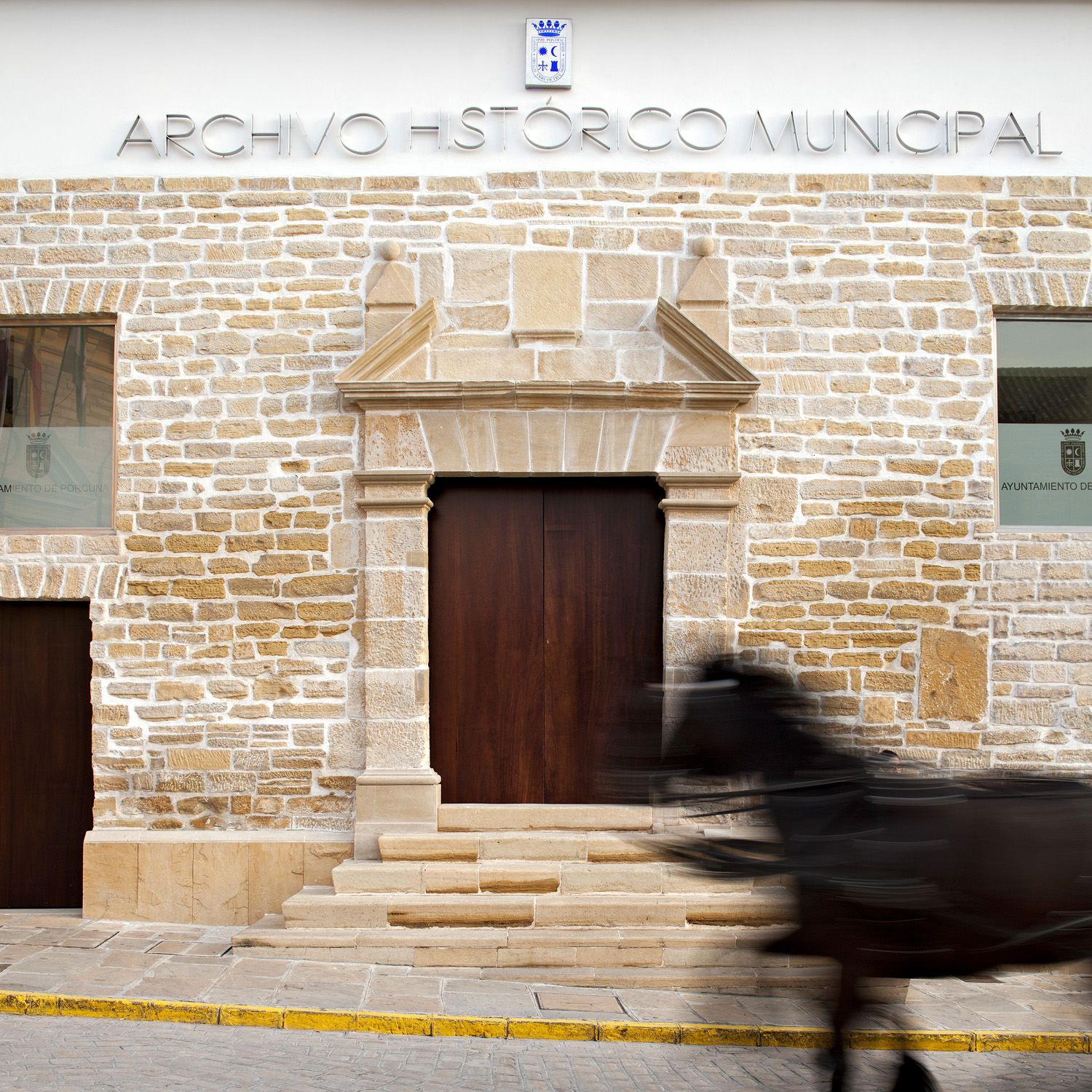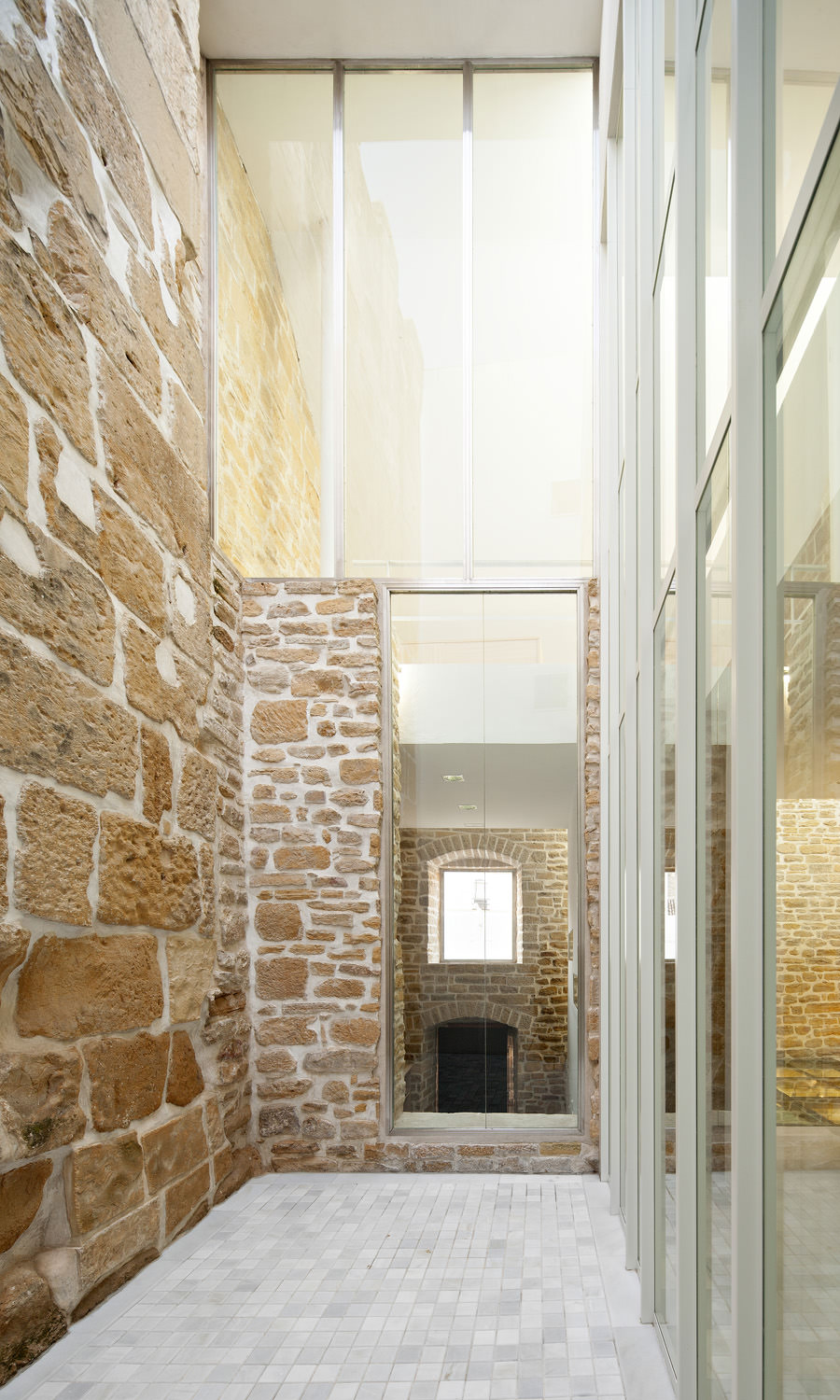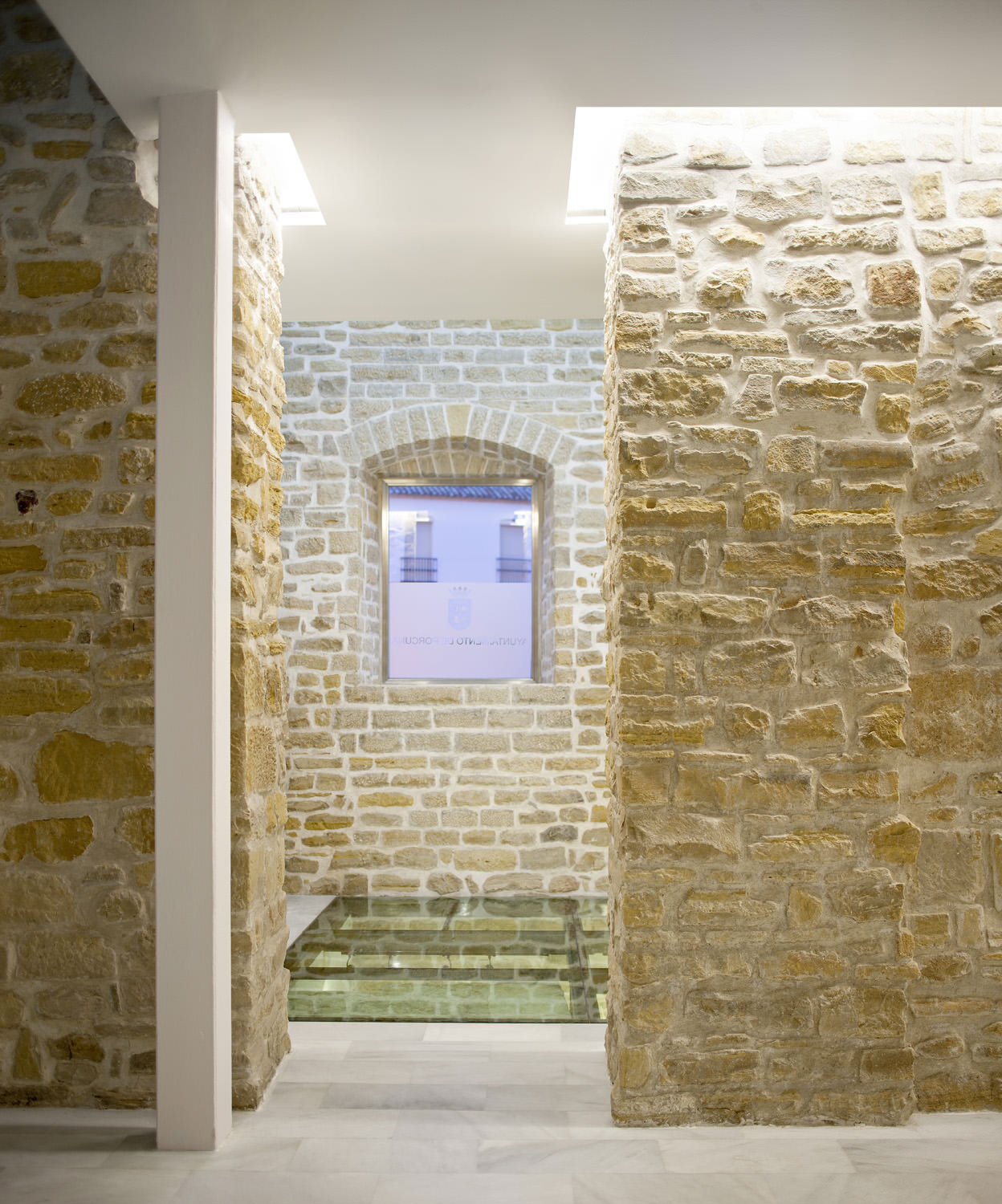Year of construction: 2016
Year of project: 2011
State: Built
Location: Plaza de Andalucía, 3. Porcuna (Jaén)
Promoter: Ilustre Ayuntamiento de Porcuna; Diputación provincial de Jaén
Architect: Pablo M. Millán Millán
Contributors: Rafael Jerez Romera (Technical Architect); Mario Cruz Febrero (Engineering); Vorsevi S.A. (Geotechnic); Pablo Jesús Casado Millán (Archaeologist); Rafael Antonio Saco Montilla (Archaeologist)
Builder: Ilustre Ayuntamiento de Porcuna
Photographer: Javier Callejas Sevilla
A wide spectrum of heritage wealth converges on a very small plot (163.50 m2) and limited by three dividing walls. On the one hand, on the horizontal plane, the underlying archaeological remains of a past structure of Iberian wells on which a system of Roman sewers is superimposed. On the other hand, on the vertical plane, the emerging elements of a medieval tower of the city’s fortified system, as well as remains of the Roman wall. And finally, the load-bearing wall structure of a building that suffered the ravages of the 1755 Lisbon earthquake and it is still standing.
Under these premises we plan to rehabilitate a space that would remove each of these historical elements and sew them into a clean, sober and simple architecture, an architecture that will be a container of heritage. The project built therefore will be a journey between the vestiges that the past has left behind, in order to generate a new space with a double use: on a new upper floor, the use of archives, and on the lower floor, the use of an exhibition hall.
The new architecture generated will allow each one of the heritage elements to be recognized independently, showing different windows to the past: some on the ground that show the Iberian and Roman constructions compared to others on the walls that allow a glimpse of the Roman wall together with the remains of the medieval tower.
Porcuna Royal Butchers
Architect: Pablo Millán.
If a young architect with a brilliant academic career and who is already doctor, does a splendid work in the center of a historic center, and decides make her contained and quiet, I would say that she shows traces of very good architect.
Some of the brilliant young architects who are out on the streets today seem to who need to shout their supposed genius to the four winds and stand up all kinds of weird things just to get attention. They are will-o’-the-wisps, flower of one day.
This is about the restoration and manipulation of a building attached to the Porcuna Town Hall, the ancient Roman city of Obulco, to locate in he the Municipal Historical Archive. Pliny, Ptolemy and Strabo quote Obulco in his writings.
Thanks to the light and the very good disposition of the parts with which he has tidy the architect, the building, which is small, seems much larger. Which always happens with good architecture.
The building is located in the center of the city, adjacent to the building of the city hall. Our architect maintains and manipulates the façade to agree with that of the Town Hall and with the most recent adjoining buildings that are not particularly successful, that are now integrated into the whole. And the crown with a white frieze that allows it to give a little more height to the interior space. The two floors have the right height and the light, taken from high, floods the interior in a very appropriate way.
The new building does not put any of the adjacent buildings in a bad light. It seems that our architect had read Marcus Aurelius, the emperor Roman, who in point 15 of chapter 1 tells us, when speaking of his father, that he made no one in front of him ever feel inferior. A well-advised virtue for architects working on historic sites.
The material of the façade is correct, the stone seen as that of the Town Hall, and the layout of the holes, and even the labeling.
The plants, simple and logical, are impeccable. Inside, a plot of patios and well-ordered rooms and corridors, always keeping order pre-existing of the three stone walls parallel to the façade and which leaves the bathed in the extraordinary light that it takes from above and that is reflected in the white Macael marble floor. The same floor of the Alhambra in Granada and all of Andalusia, broken down here in an original way. The resulting space it is unitary, the circulations of this luminous puzzle being very clear.
Even the glazed floor at the entrance to attest to the archaeological remains, It seems that it is made of water, it is so well placed.
The cracks in the ceilings allow light to slide through the walls verticals, both the white ones and those that have been left, such as the façade, with the stone seen
Nothing more and nothing less. A work of a first-class architect.
Alberto Campo Baeza

